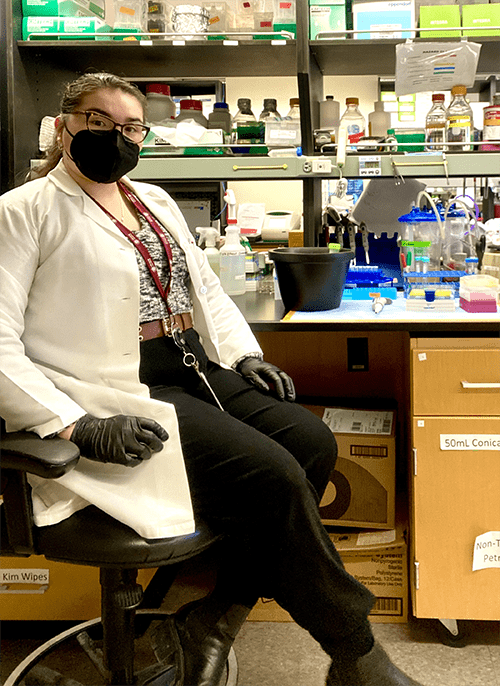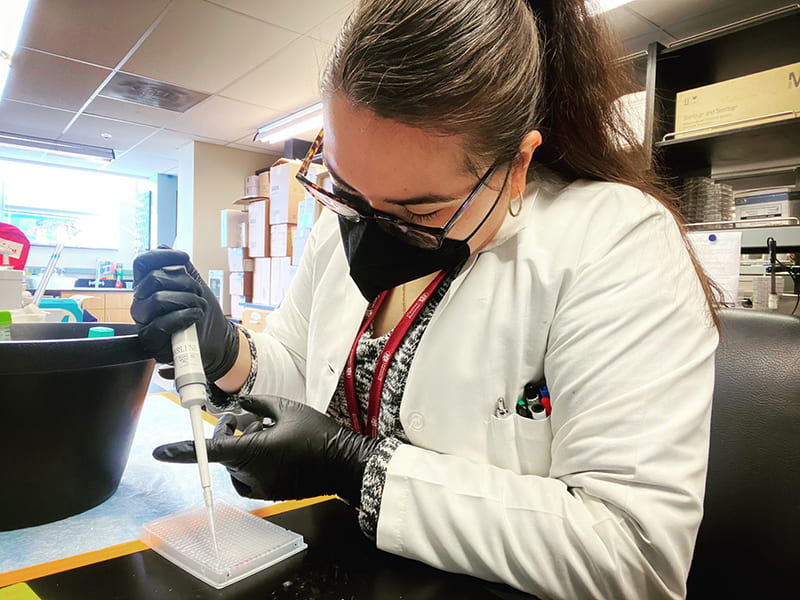Tell me about your background.
I am a first generation Latina raised in Kansas City, MO. I earned my Associates Degree concurrently when I graduated high school in 2016 and earned my B.S in Microbiology from Kansas State University in 2019. During my undergraduate journey, I was a part of the Developing Scholars Program, a program focused on providing URM students with research experience for 3 academic school years. I worked in a virology lab throughout my undergraduate education and once I graduated, I worked at a clinical diagnostics lab. I then applied to graduate school a year later and in 2021 started my graduate journey here at WashU.
What led you to study at Washington University?
The collaborative scientific research conducted in this university. I believe that collaboration in the scientific field is key to successfully solving a problem.
What are your future career goals?
I plan to pursue a career in science communication and education to provide a bridge between the scientific community and the public. The COVID-19 pandemic was a major player in giving me the desire to pursue this type of career as there has been a lot of misinformation and confusion regarding what information is actually true. Being able to provide accurate information about various scientific topics to different audiences allows for sense of transparency and clarity on confusing topics that may put the public at ease.

What are you working on right now?
I am currently working on my qualifying exam and lab project consisting of the factors that may contribute to the immunosuppressive cervical cancer tumor microenvironment and what role SERPINB3 may have in this.
What has been the most challenging aspect of this specific area of study?
The most challenging aspect of this specific area is that the tumor microenvironment is highly diverse and 2D culture results may be completely different in physiological settings.
What are your future plans for this subject?
I would like to develop a 3D-culture system that allows us to study cervical cancer microenvironment giving more in-depth information than normal 2D culture systems.
Was there something in particular that led you to this subject of research?
During my undergraduate education, I worked in a virology lab, learned about onco-viruses, and learned that HPV is one of them, which brought me into the cervical cancer research area.
Marlene is a member of the Markovina Lab.
